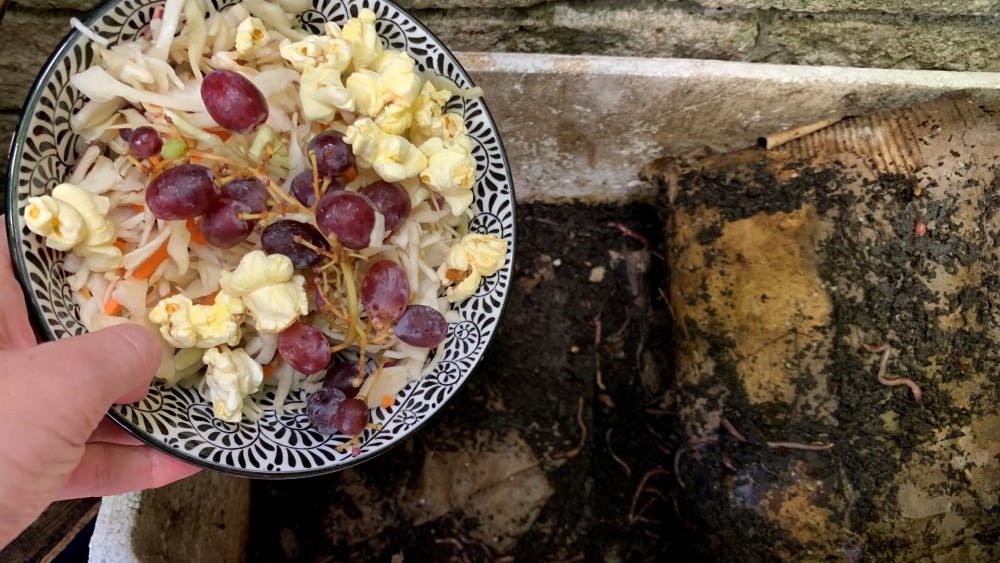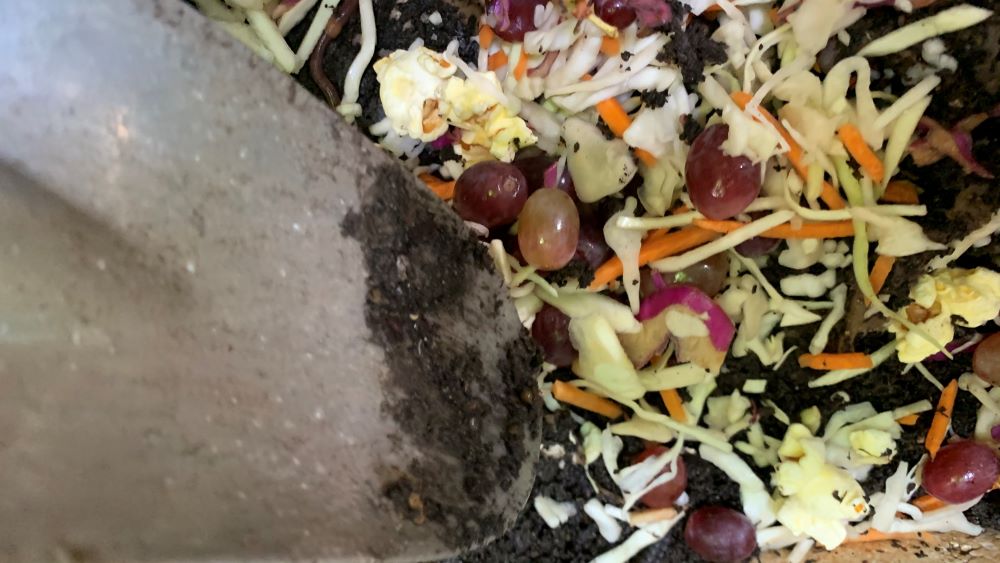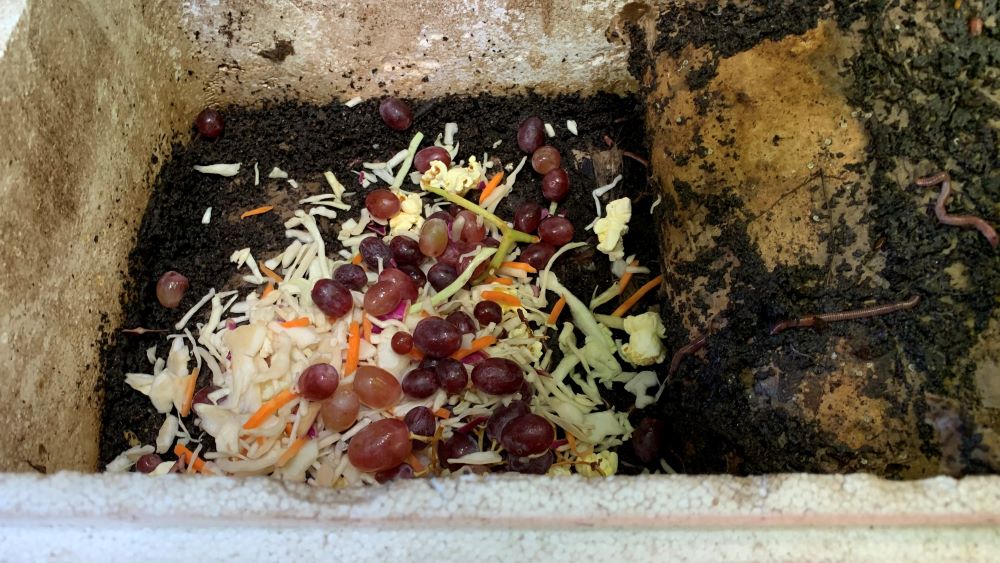Fresh or dried corn kernels can be added to compost bins, piles and worm farms. They are high in carbohydrates so can attract ants, rats and mice if they are not covered up. Mix them through your compost pile thoroughly with a garden fork and place the lid on tightly to keep the rodents out.
This article will explore how to compost corn kernels at home. This includes how to add them to a worm farm and tips to help them to break down fast.

How to compost corn kernels
Corn kernels that are dried and ready to make into popcorn or fresh corn kernels cut from the corn can both be added to compost. Even canned corn kernels can be added to compost. There are a few tips for helping corn to break down fast. This is important because they can attract rodents.
Corn kernels are a natural and organic material. Avoid adding excessive amounts of corn kernels that are covered in butter or salt. The salt can damage your soil if too much is added.
Here are my top tips for composting corn kernels successfully.
1. Start with small amounts

If you are adding dry or fresh corn kernels, always start by adding small amounts. Begin with a few handfuls and mix them through your compost bin. If you are using a small 4 sided bin that is less than 3 feet by 3 feet, adding small amounts is essential.
If you have a larger compost bin you can add more over time. Wait for the first lot of corn kernels to break down before adding more.
2. Mix the corn kernels through thoroughly
When adding corn kernels to compost it is essential to mix them through with the other ingredients thoroughly. This helps to hide the from the rats, mice or ants that might like to feed on them. They will become in contact with the other ingredients and soil bacteria that will help to break them down.

Mix them as deep as you can to reduce the chance that rodents will smell them and decide to visit. You can sprinkle corn kernels on top of your worm farm and gently stir them in the top of the castings. This will help the worms and soil bacteria to reach them.
3. Add other food scraps with the corn
It is always a good idea to mix food scraps together and add a variety of ingredients at the same time. This helps to balance out the moisture content, add a range of nutrients that will be broken down into the compost and also to feed the variety of soil bacteria that exist.

I always find that my food scraps break down faster when they are mixed together with others. Adding fresh corn kernels is fine, but they will contain more moisture than dried kernels. Add some extra brown material to absorb the water to find balance in your bin.
4. Add brown materials
The next step is to add some more brown material to your compost bin after adding corn kernels. Corn is a green material, even if it is dry so grab some brown materials and add them in.
Some great brown material options include dry fall leaves, straw, hay, dry grass sugar cane mulch or crushed bark.
Add around 1 part corn kernels to 3 parts brown material. You can add slightly less if you are adding dry corn kernels because they will not contain as much moisture.
5. Cut up whole ears of corn
If you are adding whole fresh or cooked ears of corn it is best to cut them up. Use a strong knife to cut the corn cobs into small pieces, 4-5 each is best. This will help them to break down fast. If you leave the cob of corn whole, you might find it still in your compost heap months later.
The corn kernels will be broken down fast but the central stem can take a lot longer to break down. Cut it into small pieces to speed up the process.
6. Add the corn husks too

You can add corn husks to your compost bin or worm farm. Cut the corn husks into strips with kitchen scissors and mix the them through. Once they are dry, they are actually a great brown material. You can leave them to dry in the sun for a day or two. Leaving corn husks in the bottom of your fridge for 1-2 months works too.
Adding dry corn husks to your worm bin is a great way to add extra bedding. You can layer them on top of the worm castings to give them worms a great place to hide in. There is no need to mix them through the castings because the corn husks will not attract rats and mice like corn kernels will.
Adding corn kernels made into popcorn to your compost
Popcorn can be added to your compost and it will break down fast. The popped corn kernels contain a lot of air so are quick to disappear when mixed through your bin. Avoid adding popcorn that has been coated in butter, sugar or excess salt because it can attract rodents, ants and flies and the salt can ruin your soil.

Popcorn that has been popped and any un-popped kernels can added to your compost bin and worm farm. It is always best to mix them through, cover your worm farm with a blanket and a lid to keep any pests out.
Can You Compost Corn Kernels? | Summary
Fresh, dried and popped corn kernels can be composted as long as they are not covered in salt, butter or sugar. They will break down like any other organic material but it is best to mix them through to avoid attracting rodents.
Start by adding small amounts of corn kernels and allowing them to break down before adding more. Any excess can be kept in your freezer until there is space in your compost bin.
Happy growing.
I am an accredited practicing dietitian, experienced gardener and a dedicated cook. I love writing and sharing my experience so you can learn from my successes and mistakes.
